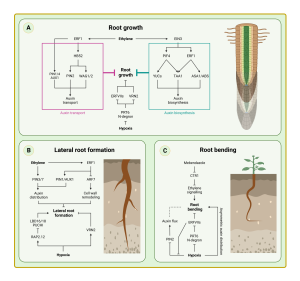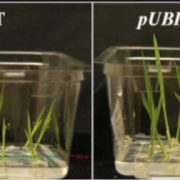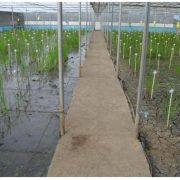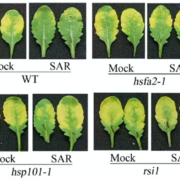Review: How plant roots respond to waterlogging
As the hottest year on record, 2023 has truly been a global annus horribilis during which  humans, other animals, and domesticated and wild plants have faced unprecedented environmental challenges. In the past month alone, torrential rainfalls have wreaked havoc in Asia, the Middle East, and many parts of Africa, Europe, and the Americas. Frightenedly, disruptive flooding is expected to get worse, adding to food security concerns. Therefore, it’s timely to read about how plants respond to waterlogging in the new review by Daniel and Hartman. The main challenge in waterlogging is hypoxia, oxygen deprivation. The plant senses its waterlogged state through both hypoxia and an accumulation of ethylene, which is not able to diffuse away under water. Some plants have adaptations that enable them to tolerate at least some waterlogging, such as aerenchyma (air channels in roots), the ability to enter a quiescent state, or rapid elongation to reach above the water level. However, for non-adapted plants, even short periods can be lethal. The review covers plant responses from sensing, metabolic changes, and growth responses including changes to root system architecture and gravitropic setpoints (plants are amazing). It also discusses the very important question of translating from simple experimental systems (e.g., Arabidopsis on Petri plates) to real-world conditions, and makes the plea for moving towards “less artificial” experimental conditions. (Summary by Mary Williams @PlantTeaching) J. Exp. Bot. 10.1093/jxb/erad332
humans, other animals, and domesticated and wild plants have faced unprecedented environmental challenges. In the past month alone, torrential rainfalls have wreaked havoc in Asia, the Middle East, and many parts of Africa, Europe, and the Americas. Frightenedly, disruptive flooding is expected to get worse, adding to food security concerns. Therefore, it’s timely to read about how plants respond to waterlogging in the new review by Daniel and Hartman. The main challenge in waterlogging is hypoxia, oxygen deprivation. The plant senses its waterlogged state through both hypoxia and an accumulation of ethylene, which is not able to diffuse away under water. Some plants have adaptations that enable them to tolerate at least some waterlogging, such as aerenchyma (air channels in roots), the ability to enter a quiescent state, or rapid elongation to reach above the water level. However, for non-adapted plants, even short periods can be lethal. The review covers plant responses from sensing, metabolic changes, and growth responses including changes to root system architecture and gravitropic setpoints (plants are amazing). It also discusses the very important question of translating from simple experimental systems (e.g., Arabidopsis on Petri plates) to real-world conditions, and makes the plea for moving towards “less artificial” experimental conditions. (Summary by Mary Williams @PlantTeaching) J. Exp. Bot. 10.1093/jxb/erad332









